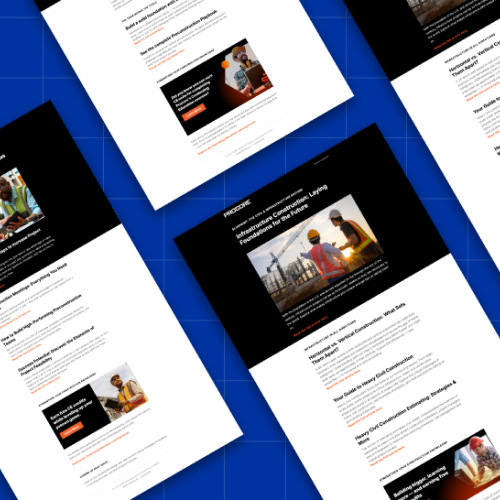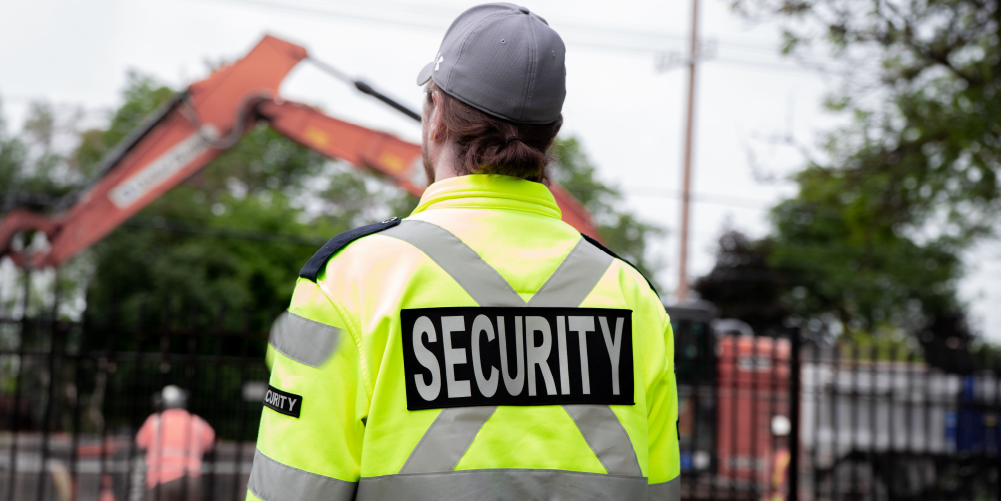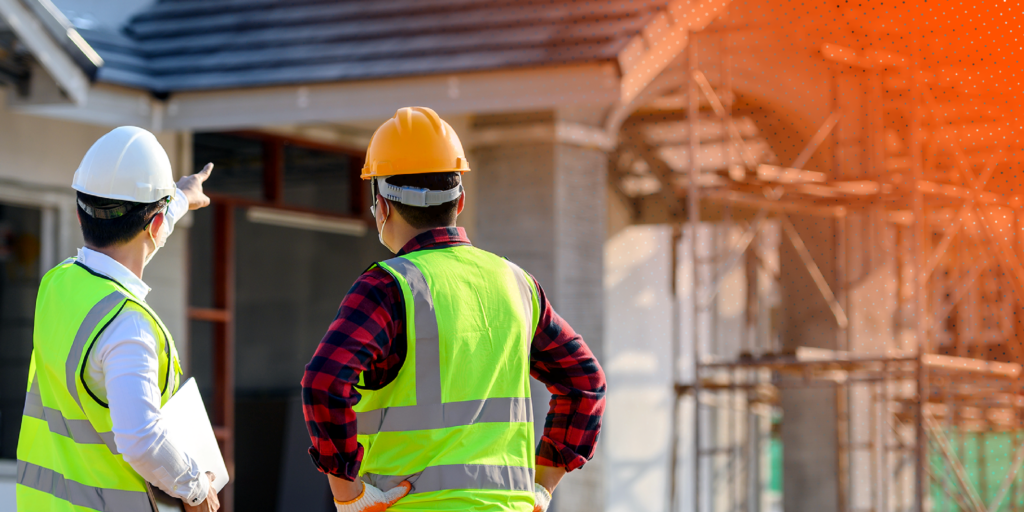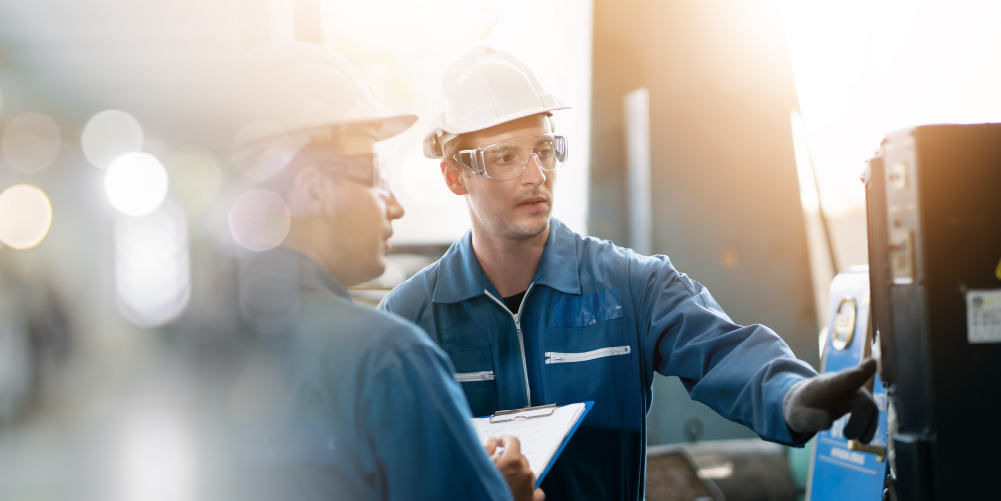— 9 min read
Using AI to Manage Risk in Construction
Last Updated Apr 9, 2025
Last Updated Apr 9, 2025

Since the day construction became an industry, many people have been trying to manage the risks of building things — to identify and mitigate potential conditions that might impact a project’s safety, schedule, cost, quality or compliance. Part of the allure of using artificial intelligence (AI) in construction is the potential to make the complex, ongoing parts of risk management less risky. But the reality of what AI can do is still a long way from its potential.
Effectively introducing AI as a tool to improve risk management is possible, but it depends on understanding its current capabilities, its current limitations and how to set teams up for long-term success, even as the pace of innovation continues to accelerate.
Table of contents
The State of AI in Construction
The construction industry has gained a reputation over the years for being hesitant to adopt new technologies or digital tools. There’s some truth to that reputation, especially when it comes to AI, but it’s often a well-placed hesitancy.
Up to now, most AI tools haven’t been developed enough to reliably integrate into construction’s core processes. Beyond that, selecting and maximizing tools often requires large investments of time and money, and can introduce risks of its own.
However, this reputation of reluctance undersells the eagerness of many people in construction to improve the quality of what they do and unlock competitive advantages in a crowded, challenging industry. And after all, construction is a business of tools and problem solving, and, at its best, AI promises to be a transformative problem-solving tool.
What AI Can Do to Help Mitigate Risk
In construction, artificial intelligence usually refers to two different tools. Artificial narrow intelligence (ANI) relies on structured systems designed and trained to perform a specific task or set of tasks to enhance productivity and efficiency. Examples include predictive maintenance tools that identify when machinery and equipment need maintenance or BIM’s ability to analyze data to detect potential design conflicts. Generative AI uses large amounts of data to identify patterns, make predictions and provide insights.
If companies are intentional about how its deployed and account for its limitations, AI can help manage risk in a few key ways.
Improve Access to Information
AI tools make it easier for people to access important documents and data, while also improving the quality of the information they’re able to access. It can improve search capabilities by understanding natural language and context, suggest relevant data by analyzing project phases or tasks and integrate data from multiple sources to create coherent and actionable takeaways.
This saves valuable time in the field, which can help people get in the habit of proactively referencing or double-checking information, as opposed to doing those things only when they’re worried. However, it's important to recognize that AI tools may not catch every nuance or error until they have been extensively evaluated and tuned.
Flag Document Conflicts
Construction documents tend to be long, detailed and contractually binding, so there are countless opportunities to miss a high-stakes mistake. AI systems can analyze a range of documents to identify inconsistencies and present them to the correct people on the project or quality teams. Being able to do this analysis early in the construction process and all at once, as opposed to discovering discrepancies throughout the build, can avoid costly rework and delays.
Monitor Regulatory Compliance
Similar to flagging inconsistencies and discrepancies between documents, AI can review contracts and permits and flag potential compliance issues to help avoid legal penalties or project shutdowns. This can improve relationships with authorities having jurisdiction (AHJs) and improve inspection processes.
Draft Routine Documents
AI doesn’t yet have the powers to think critically, synthesize precisely or make nuanced judgements — the things that are needed to reliably create final drafts of important documents and communication.
However, AI is able to take user-inputted information to generate drafts of routine documents, such as requests for information (RFIs), or templates, such as daily logs. Creating first drafts and automating the completion of template sections saves time and energy that can be directed towards making decisions and creating quality final documents.
Enhance Safety Monitoring
Multimodal AI is able to assess multiple types of data, such as text, voice, image and sometimes video. This can help assess data from cameras around a jobsite to identify potential hazards, such as fall risks, obstructions, proper usage of personal protection equipment (PPE) or proper material store.
Safety AIs can be trained in materials, such as construction management best practices or safety science, to not only identify potential problems but also provide recommendations on how to fix them.
Optimize Supply Chain Management
AI can automate the takeoff process, help find suppliers and identify potential delays or disruptions. This helps a project stay on schedule and helps with one of the trickiest parts of managing complex projects: making sure the right resources are in the right places with the right people at the right times.
The Limitations of AI to Mitigate Risk
Like any tool, AI has limitations. Understanding what AI can’t do ensures it’s only used in the correct contexts and doesn’t end up creating bigger issues.
Complex Judgments
AI is limited in its ability to do tasks that require nuanced understanding, complex decision making and intuition.
For example, an AI could review design changes to analyze if they adhere to guidelines, conflict with contract specifications or can be easily enhanced. However, AI doesn’t know what else is going on in the job, so in that same review of design changes, AI could miss elements that relate to local architectural styles, historical context or unique environment conditions. A human should be reviewing the work of AI to check for mistakes, oversights and the validity of all recommendations.
AI-generated Errors
AI is extremely dependent on the quality of the data it’s provided. Any issues or inconsistencies with data can lead to flawed outputs, analysis and recommendations. Again, AI-generated information should always be checked by a human.
New Risks Created by AI
While AI can help to mitigate common risks, it can also introduce new challenges and risks that need to be accounted for.
Over-reliance and Reduced Critical Thinking
When tasks become automated, people can become complacent. This can result in humans reducing their critical thinking and decision making, while trusting technology to do things it’s not capable of doing. AI should augment human expertise, not replace it, so it’s important to create frameworks and systems for humans to review and verify AI analysis and recommendations.
Unexpected Failure Modes
AI systems may not always account for real-world variables or nuances that humans intuitively understand, so systems can fail in unpredictable ways.
For example, an AI could incorrectly flag a structurally sound design because the tool is unable to account for an unusual architectural feature. AI systems should simulate various scenarios to identify potential failure modes.
Changes in Workplace Dynamics
AI can alter how people feel about and relate to their jobs, for better and for worse. Forcing people to adopt a tool without being able to voice their concerns, ask questions, or understand the reasons behind its adoption can lead to fear, resentment, and “malicious compliance,” where workers follow AI recommendations and requirements without applying critical thinking and judgment.
Provide training so people feel equipped and excited to implement new tools, and take time to answer questions, address concerns directly and explain the objectives of bringing in new technologies.
Implementation Challenges and Learning Curves
New tools take time to understand and master. Introducing tools too quickly and forcing mass adoption can result in mistakes and oversights that can compound over time. Start with introducing AI to low-risk, repetitive tasks to build familiarity and demonstrate value. Similarly, foster a culture that values experimentation and doesn’t penalize failure so people feel more open to trying new innovations.
Surveillance Concerns
AI is helpful for monitoring workers in things from ensuring they’re wearing PPE to tracking project progress, but that can make workers feel uncomfortable, not trusted or devalued. Always use surveillance and monitoring in ways that are ethical and prioritize safety and efficiency, as opposed to being punitive. Go an extra step as well, to make those systems transparent in how they work and why they’re being adopted.
How to Make the Most of AI in Construction
As with the implementation of any software, introducing AI in construction is more likely to be successful with the right mindsets and practices.
Start with low-risk, repetitive processes.
Don’t suddenly automate as many workflows and processes as can be found. This can lead to compounding errors, an inability to identify root causes of issues and a lack of confidence from users who feel like they’re being forced to use tools they don’t understand. As with phased roll-outs, start by implementing AI into low-risk, repetitive processes such as document management to build familiarity and demonstrate value.
Be patient with hesitant workers.
It’s hard for people to trust what they don’t understand, and many people have limited understanding of AI. Often, workers have spent years developing their risk management systems, so it can feel daunting and fraught to leave those systems behind. Building trust and demonstrating how AI can complement their work starts with offering training, demonstrating value, and addressing concerns head-on.
Focus on Augmenting Human Capabilities
Machines can’t replicate the most complex, advanced parts of human expertise. AI is most effective when it’s deployed to improve the lives of workers and the quality of their work, rather than aiming for full automation. When AI is used to enhance worker performance and alleviate difficult and mundane tasks, humans have more time and capacity to do the things they do best: make nuanced decisions, assess unique circumstances and solve complex problems.
Prioritize Data Quality
AI systems depend on data that is accurate and up-to-date. Data should be collected, stored and analyzed consistently and systematically. Many parts of data systems can be automated, such as intake or parsing through RFIs to look for trends, but humans should be involved in vetting legacy data and monitoring the system once it's up and running.
Form Exploration Teams
Some staff, particularly younger workers, are eager to explore and experiment with AI. Create teams to explore the ways AI can be applied and report their findings. This creates an environment that values innovation and collaboration, while also vetting new products before making big investments.
Stay updated on what’s happening in construction.
Subscribe to Blueprint, Procore’s free construction newsletter, to get content from industry experts delivered straight to your inbox.

A Proactive Approach To AI
The power of AI is advancing so quickly, it’s tempting to sit back and wait to see where it goes. But even as AI hasn’t yet reached its reliability and utility potentials, it’s important to begin to engage with the technology now in order to position your team to leverage its strength in the future.
Future products will only be transformative for organizations that are prepared to integrate, understand workflows that would benefit and have team members who are familiar and comfortable with adopting and implementing new tools.
Was this article helpful?
Thank you for your submission.
100%
0%
You voted that this article was . Was this a mistake? If so, change your vote here.
Scroll less, learn more about construction.
Subscribe to The Blueprint, Procore’s construction newsletter, to get content from industry experts delivered straight to your inbox.
By clicking this button, you agree to our Privacy Notice and Terms of Service.
Categories:
Tags:
Written by
Hugh Seaton
Hugh is CEO of The Link.ai, an consulting and software company focused on Artificial Intelligence applications and specifications management. Prior to The Link.ai, Hugh served as a general manager at the Construction Specifications Institute. His career has spanned 30 years in technology, at Sony, AOL, Philips Electronics and Google, among others. Hugh is author of The Construction Technology Handbook, host of the Constructed Futures Podcast, and the monthly AI in Construction webinar series, and Procore’s Data in Construction e-learning module. Hugh lives in Austin, Texas with his dog, Bob.
View profileJames Hamilton
70 articles
James Hamilton is a writer based in Brooklyn, New York with experience in television, documentaries, journalism, comedy, and podcasts. His work has been featured on VICE TV and on The Moth. James was a writer and narrator for the show, VICE News Tonight, where he won an Emmy Award and was nominated for a Peabody Award.
View profileExplore more helpful resources

Mitigating Subcontractor Risk: Pro Tips for General Contractors
Every construction project comes with unique risks, and assessing and mitigating subcontractor risks is necessary for general contractors (GCs) to maintain profitability and smooth operations. Effectively planning for and managing...

Jobsite Security: Assessing and Minimizing Construction Site Risks
Assessing security needs for a construction site early can save time and money and avert potential complications later on the project. Security on a jobsite mitigates risks by protecting the area...

Construction Safety Management: Building a System to Reduce Risk
Due to the high-risk nature of construction work, having a comprehensive construction safety management plan is essential. Construction safety management is the formal process that details how safety plans are...

QC in Construction: How Builders Manage Quality Control
In construction, quality control (QC) refers to the procedures and activities to directly monitor, regulate, and correct deficiencies in the quality of materials, methods, and the final product. The aim...